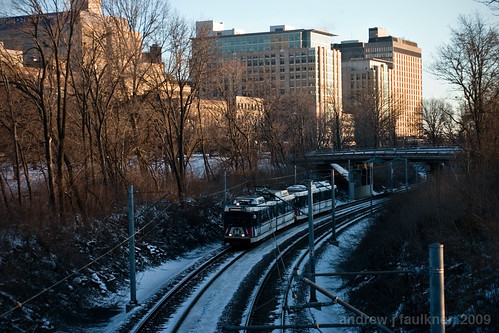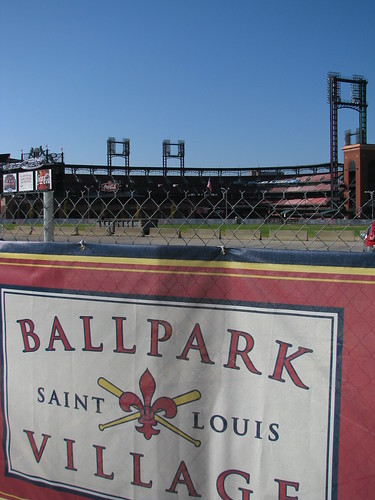Many times, when dealing with intractable problems it is impossible to resist succumbing to the grass-is-greener approach. In Saint Louis, during conversations with a wide array of advocates and transit professionals, the comparison to Denver is inevitable: "if we had a transit district like Denver", "Denver can expend that much per capita of transit because of their political situation", or simply "St. Louis is not Denver". I have always felt that this class of statement exist solely to obviate the responsibility for a lack of progress. Resignedness to the status quo is a protective mechanism for those who have tried and failed.
Who would have thought three months ago that someone in Denver might be saying "if only we had the political courage to support transit like Saint Louis"?
Today Yonah Freemark broke news that transit leader Denver has scuttled plans to approach voters in its Regional Transit District for a sales tax increase. It appears that in the current economy, with heightened pressure from the Tea Party and anti-tax crowd and falling revenue from existing taxes Denver politicians would not risk even putting a sales tax increase in front of the voters. This decision will substantially postpone the completion of the 122 miles FasTracks expansion plan until after 2042. As you might remember, the St. Louis region passed a sales tax increase last week. What can we take away from the situation in Denver?
1. Sales taxes should not form the financial foundation of something as critical as a transit system.I am inclined to share this view with zealous anti-government critics. As regressive taxes, sales taxes and are extremely vulnerable to economic instability. While there is no golden bullet, relying on sales taxes is dangerous. Other options are not much better: income taxes would be difficult to justify given that those who would contribute the most typically use the system the least, and property taxes place the burden solely on landowners. State appropriations vary based on the political breeze and uneducated rural legislators can easily hold urban areas hostage.
If transit plays as vital role in regional economies as the supporters of Prop M claim, then the least bad single tax option might be a corporate earning tax solely devoted to the development of economic infrastructure and, specifically, transit.
2. Regional Transit Districts are not a panacea for funding troubles.At a recent City Affair panel discussion the executive director of Citizens for Modern Transit seemed to indicate that the establishment of a bi-state regional transportation district would solve Metro's perennial financial woes. Denver now proves that my skepticism was founded. Casting a broader net adds some stability, but a broader geographic area of support does not change the fundamental unsustainability of the system.
The ideal revenue stream should combine a mix federal grants [new infrastructure] with corporate taxes [for operations], and sales and income taxes [for citizen buy-in].
Only when a balanced funding mechanism is in place for the region can a transit district be successful.
3. Transit organizations have a greater onus to be responsible and transparent in decision-making and operations than charitable organizations .A commenter to the story condenses the anticipated public opposition to a .4% sales tax increase:
"Nobody trusts the RTD ... The former head got $3 million in compensation ... There's no oversight ... The proposed expansions don't make sense."
These comments should be eerily familiar to anyone following the coverage in Saint Louis. Whether these reactions are the result of true problems or a post-rationalization based on antagonism to transit, it is clear that the RTD must do a better job explaining itself to the public. While Metro in Saint Louis has made great progress in this regard, it cannot afford to rest either.
As Freemark writes:









